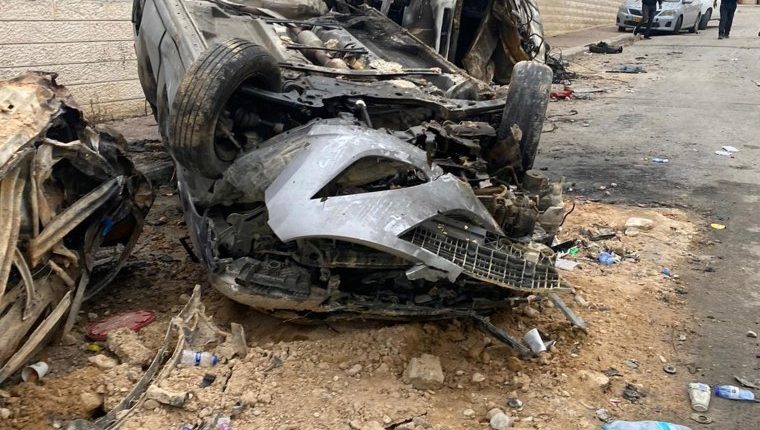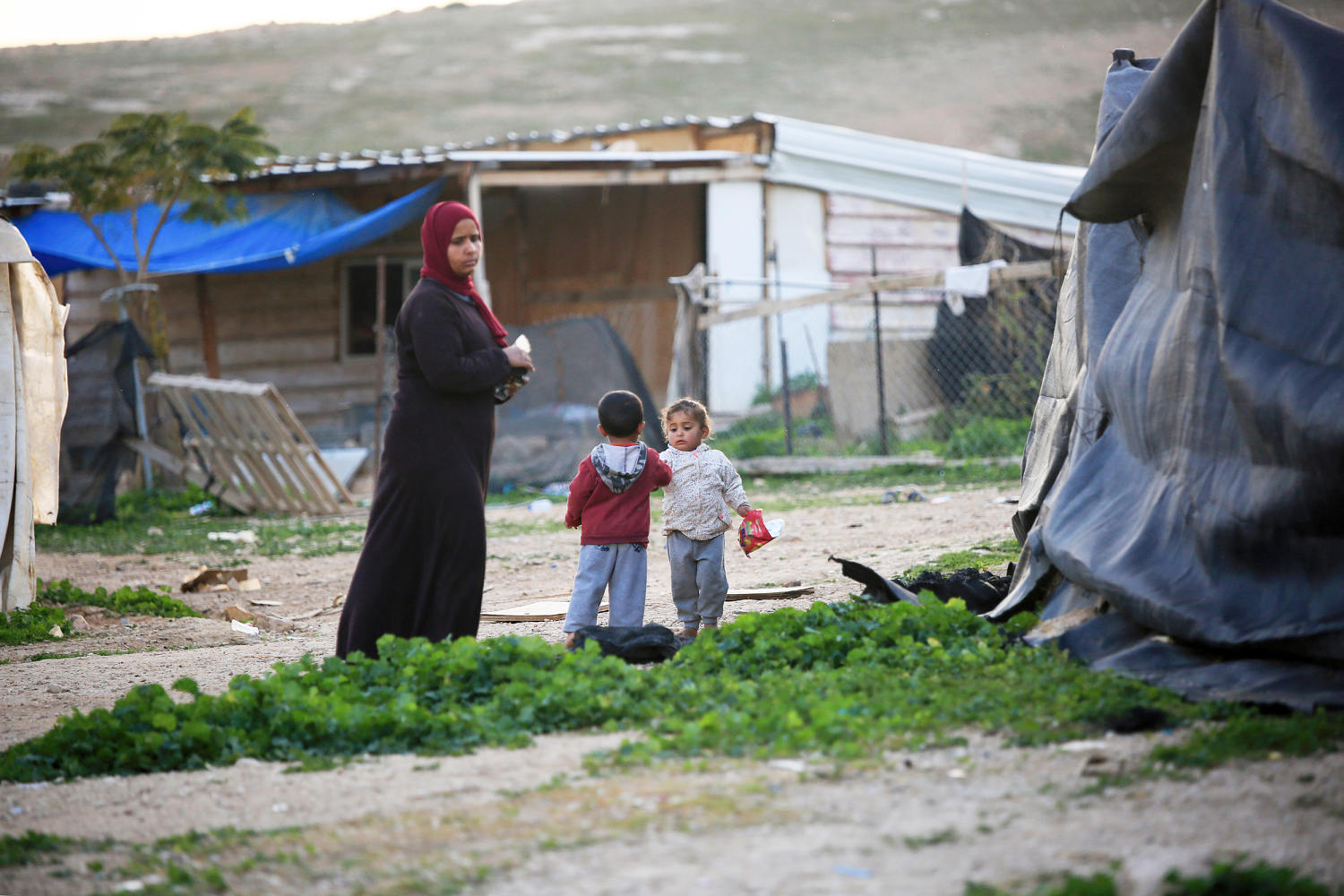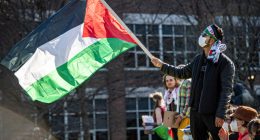There are now about 300,000 Bedouins in the Negev.
During the 1948 war that led to Israel’s creation, most of the Bedouins living in the southern Negev fled the area or were forced out, relocating to Jordan, Syria, the West Bank and Gaza. The government concentrated those who remained into a smaller area of land, and later sought to move them into newly built townships.
But many refused, reluctant to give up their ancient way of life.
An estimated 100,000 Bedouins live in villages without electricity, running water and paved roads. They are barred from building permanent homes if they won’t live in one of the approved towns, so many squeeze into small hovels made out of tin and corrugated steel. The villages lack rocket sirens, bomb shelters and cover from Israel’s Iron Dome missile defense system.
For decades the Bedouins have sought to have their villages recognized by the Israeli government and provided basic services as well as protection from rocket attacks. But those pleas have largely gone unheeded.
The Hamas slaughter of Bedouins has laid bare their precarious existence and exacerbated long-held grievances against the government.
“As citizens of Israel and as Palestinians, we are suffering twice,” said Bedouin leader Talab el-Sana, a former Knesset member and a lawyer who provides legal assistance to those who live in dire poverty in the unrecognized villages. “We suffer from Israel’s discriminatory policies and we suffer from attacks by Hamas, living without shelters and nothing to protect us from the bombs.”
At least seven Bedouins were killed by rockets fired from the Gaza Strip, including a 6-year-old boy, according to local officials. Some eight others were gunned down while working in rural Jewish communities near Gaza, where Hamas is based.
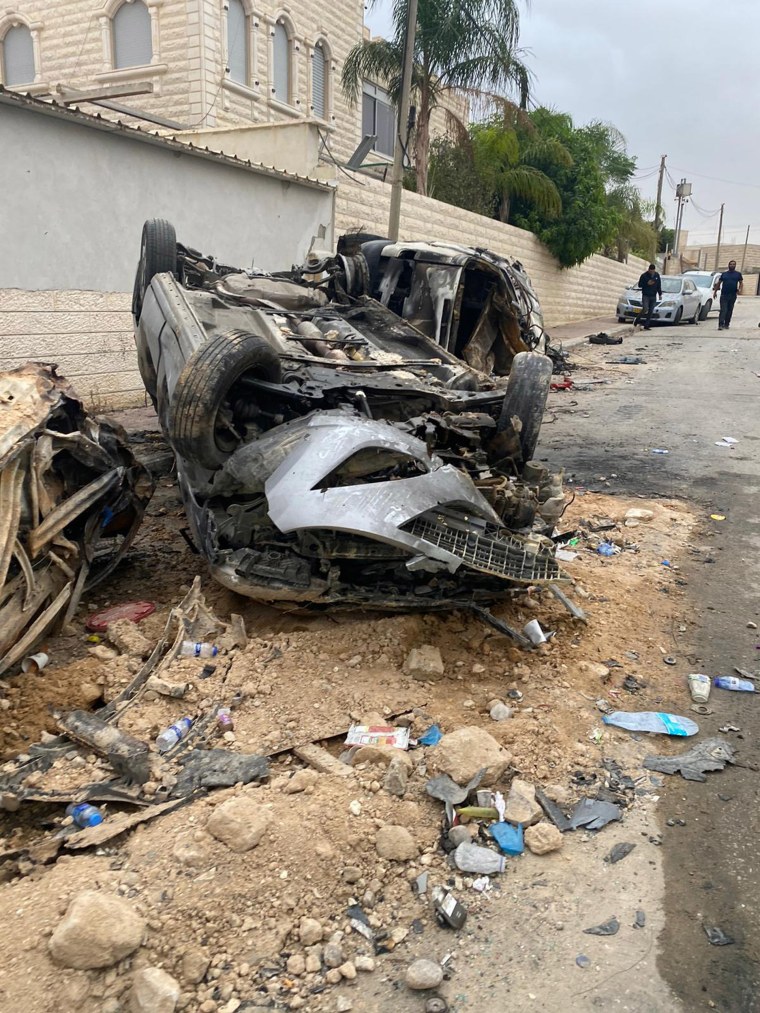
At least one of them was a van driver who had brought Israelis to the all-night dance party outside of Re’im, where more than 250 people were massacred, officials said.
Another seven Bedouins are believed to have been abducted by the terrorists and taken back to Gaza.
Yazan Zakaria Abu Juma, 6, was playing on a street in the Bedouin township of Arara when a rocket shell dropped from the sky.
“I was close to where the shell fell, and I saw people running terrified, trying to protect themselves,” said Abu Juma’s cousin, Khaled Abu Juma.
Arara is one of seven townships established by the government for the Bedouins from 1968 to 1989. As such, it has far more services than the dozens of villages where Bedouins have stayed put.
Six people were killed by rocket fire in one of the unapproved villages, Al-Bat. The dead included two brothers, ages 11 and 12.
Faiza Abu Subaih, 57, was inside her makeshift home, making breakfast for her grandchildren, when rockets landed on the sheet metal roof without any warning, family members said.
Abu Subaih died on the spot, as did her 13-year-old granddaughter, May Zuhair Abu Subaih.
“If my cousin lived in a real house, she would not have been killed,” Ali Abu Subaih said, referring to Faiza
Abu Subaih said most people in the village were in their homes when the rockets began to fall because it was an official holiday.
“There are no sirens in our village for this,” he said.
Abu Subaih noted that he and his family have no interest in moving to one of the more urban townships because “we, Bedouins, have a different lifestyle than those who live in cities.”
But life at the more than two dozen unrecognized villages is harsh. Unlike the nearby Jewish communities, they lack basic infrastructure such as sewers and services such as trash collection. The few schools are often a long, bumpy bus ride away.
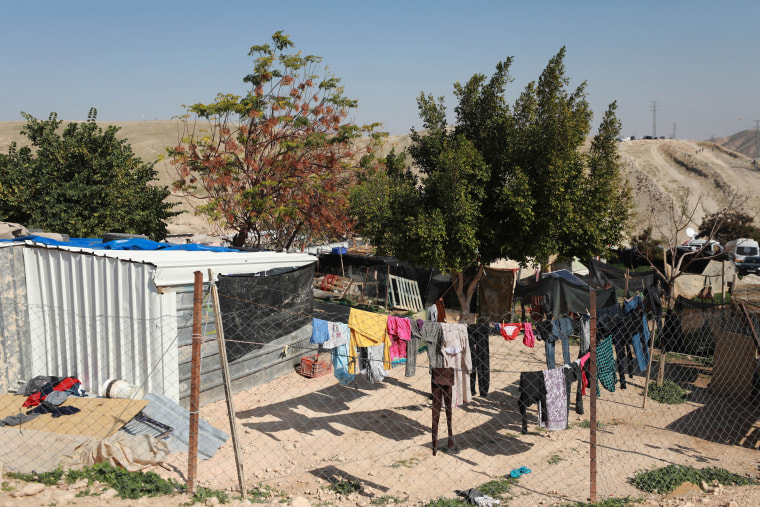
“They are the poorest of the poor in Israel, with the lowest education levels in the country,” said Yeela Raanan, general manager of the regional council for the unrecognized villages in the Negev.
Bedouins living in the unrecognized villages are unable to get permits allowing them to build proper homes “even though they have been living on the land forever,” Raanan said.
“The homes are built in the cheapest manner they can with the expectation that they will be demolished by the government,” Raanan added.
That makes them particularly vulnerable when war breaks out. Israel has distributed mobile concrete bomb shelters to some places in the south, but not to the Bedouin villages.
“Every time there is a war with Gaza, they are exposed to the danger of the missiles without anywhere to go,” Raanan said.
Source: | This article originally belongs to Nbcnews.com
